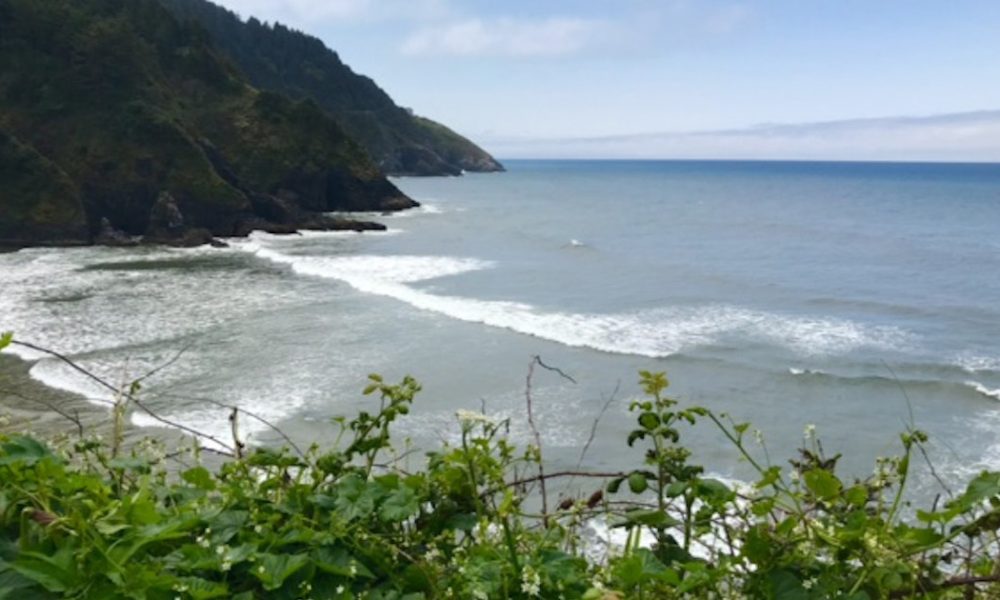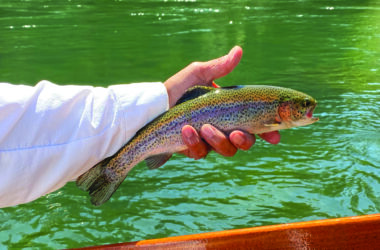 The view from the lighthouse level is world-class and characteristic of what many people imagine the Oregon Coast to be. On many days, seals can be seen sunning on the rocks below the lighthouse. At one time, two homes stood on the site of Heceta House. The master keeper’s home was moved away when the lighthouse went electric as it required less maintenance and a small crew. The entire area is filled with natural wonders, they attract artists and photographers from around the world and the lighthouse itself is the most photographed lighthouse in the world. Frank Armendariz/The Creswell Chronicle
The view from the lighthouse level is world-class and characteristic of what many people imagine the Oregon Coast to be. On many days, seals can be seen sunning on the rocks below the lighthouse. At one time, two homes stood on the site of Heceta House. The master keeper’s home was moved away when the lighthouse went electric as it required less maintenance and a small crew. The entire area is filled with natural wonders, they attract artists and photographers from around the world and the lighthouse itself is the most photographed lighthouse in the world. Frank Armendariz/The Creswell Chronicle
Reaching from the crest of the Cascade Mountains to the eastern edge of the Pacific Ocean, Lane County is among the most popular destinations in our great state – a place where you can catch a trout on the famous McKenzie River in the morning and enjoy the sunset on a Florence beach that same afternoon.
On a recent morning after breakfast, my wife Tami and I drove to the north edge of the county and visited the Heceta Lighthouse, an easy 20-minute drive from Florence.
The lighthouse sits on the cliffs of Heceta Head along Hwy 101 north of town. Heceta Head is named after the Basque explorer, Bruno de Heceta, who explored the Pacific Northwest in the 1770s under the flag of Spain.
Jutting 1,000 feet straight up from the water, Heceta Head can be seen in the distance from the beaches of Florence. Towering over the Pacific, Heceta is one of those sentinels of nature that will take your breath away. As the highway climbs toward Heceta Lighthouse, a number of turnouts offer several angles on a vista to the south, also equally breathtaking. The Cape Creek Tunnel and Bridge, completed in 1936, stand as monuments to a great time when we opened the west to the rest of America and marked the entrance to what is now Heceta Lighthouse State Park.
Commissioned in 1876, the lighthouse beacon was first lit in 1894. It still warns sailors of the dangerous and rocky coastline that quickly changes from long, sandy beaches south of Heceta to the sheer cliffs most characteristic of the Oregon Coastline to the north. The beacon was originally a kerosene lamp; it took a three-person crew to daily clean the lenses of soot. Also, the rotation was created by a spring-driven mechanism much like a clock and needed daily winding.
The massive lamp and rotation mechanism were converted to electricity in the mid-1930s and today the beacon is fully automated. The light shines 24/7/365, can be seen 21 miles from the shore, day or night and is the strongest light on the Oregon coast. Through the efforts of many volunteers and a small but committed state park staff, the lighthouse shines bright and the site maintains much of its historical character. It is the most photographed lighthouse in the world.
In 1894 the lighthouse head keeper and his two assistants lived at the lighthouse with their families in two homes – only one of which is still on the site. When electricity came to the lighthouse in the 1930s, maintenance on the lamp became much easier and the master keeper position was eliminated. The master’s home actually was sold, completely disassembled and moved to a different site in the late 1930s.
Built in 1893, the assistant lighthouse keepers’ home is now called ”Heceta House.” Today, it is operated as a bed & breakfast in partnership with Oregon by a concessionaire of the U.S. Forest Service. You can find reservation information at http://hecetalighthouse.com. Reservations at Heceta House are surprisingly not that difficult to secure.
The B&B operates year-round and serves as a gateway to many of the area’s other natural attractions. There are also campgrounds nearby.
At the end of Cape Creek bridge, exit Hwy 101 at the Heceta Lighthouse turnoff. If you’re traveling north on 101 the exit comes up on the right side of the highway; follow the short access road down to the parking lot in front of the beach. The lot is RV-friendly with adequate turnaround space and RV-specific parking stalls. You will find a self-service pay station, restrooms and an information kiosk at the head of the path up to the lighthouse.
A half-mile long trail takes you up the face of Heceta, first to the keeper’s house and to the lighthouse a bit further up the path. The path has a mild grade you will need to negotiate but is wide, well-maintained and easy to walk. The views from the path are incredible and you will likely stop many times before reaching the top to admire nature’s handiwork. Truly stunning; there really are few words.
Volunteers staff a small souvenir shop adjacent to the B&B, with proceeds helping maintain the park. Volunteers also staff a small information office next to the lighthouse and are on-hand to answer questions about the lighthouse from 11 a.m. to 3 p.m. every day, weather permitting. I found the volunteers to be knowledgeable about the history of the lighthouse and its cultural significance to the folks in far northwest Lane County.
From the southern Willamette Valley there are a couple of routes to the coast.
Most popular is Highway 126 west from Eugene to Florence, about 90 minutes’ drive under most conditions. The second is to take Highway 36 through Cheshire and Triangle Lake. Plan to add about 30 minutes to the drive but it is a pleasant drive through Lake Creek Valley with scenery reminiscent of bygone times.
Frank Armendariz is a guide on the rivers of the Great Northwest. Contact him through www.rivertrailoutfitters.com.








